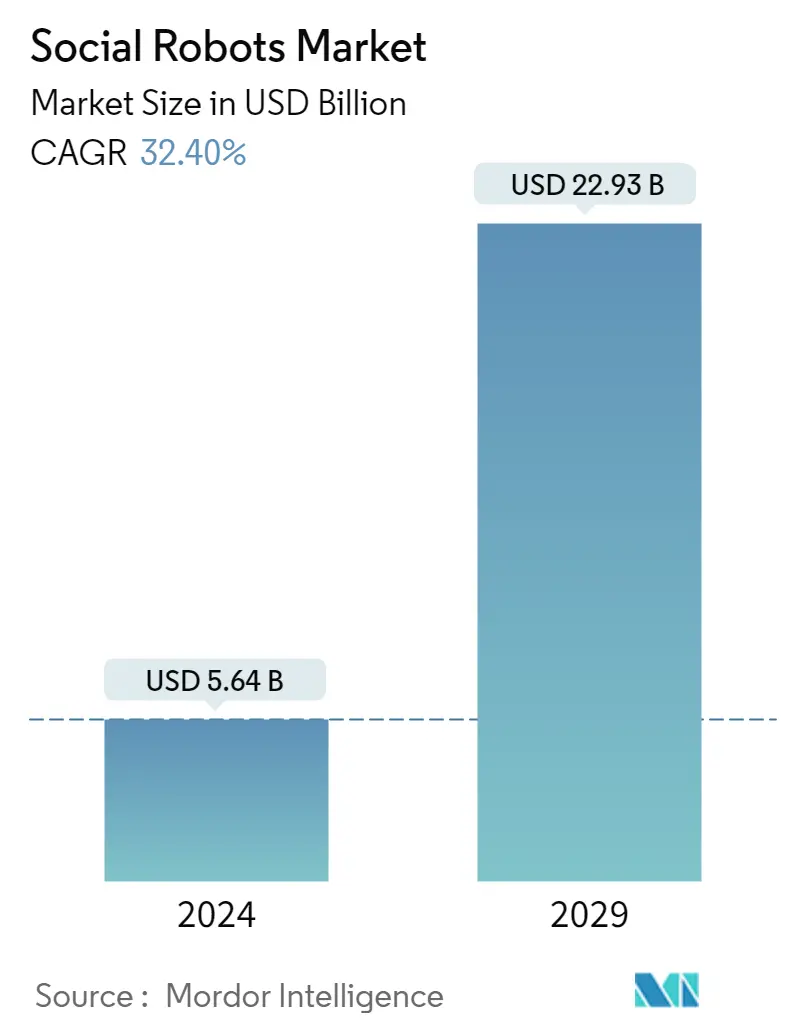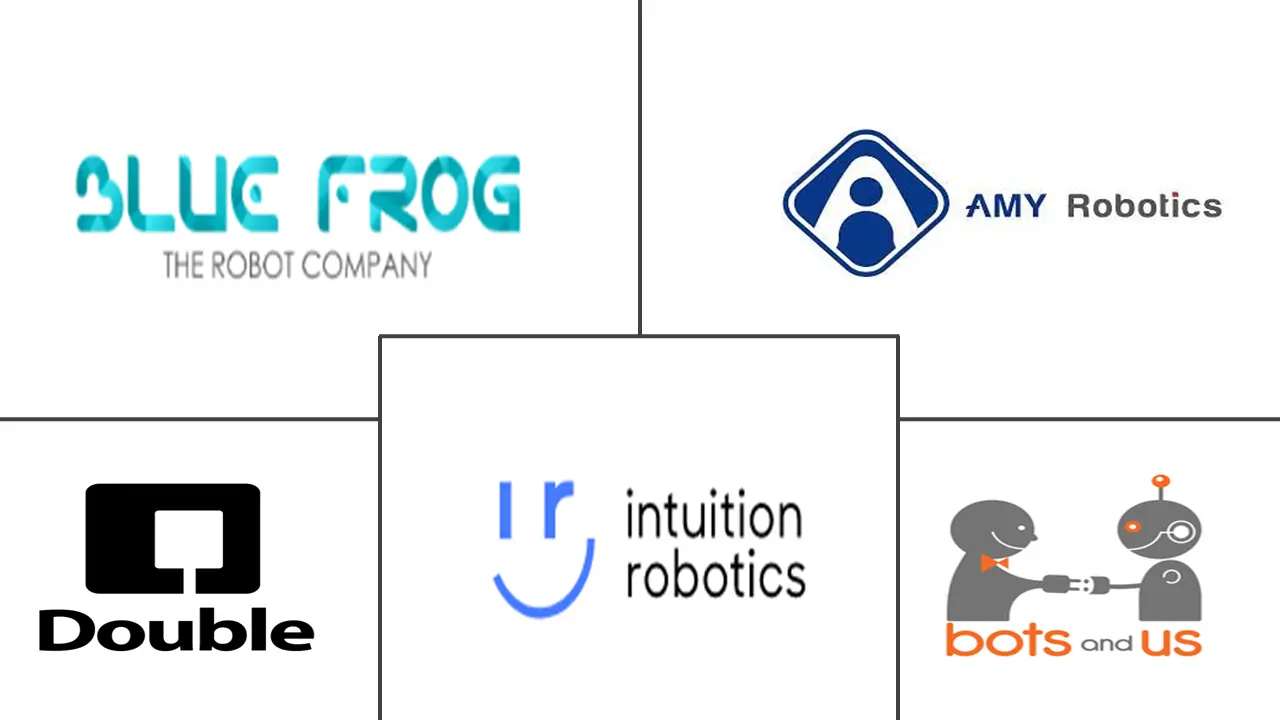Market Size of Social Robots Industry

| Study Period | 2019 - 2029 |
| Market Size (2024) | USD 5.64 Billion |
| Market Size (2029) | USD 22.93 Billion |
| CAGR (2024 - 2029) | 32.40 % |
| Fastest Growing Market | North America |
| Largest Market | Asia-Pacific |
Major Players
*Disclaimer: Major Players sorted in no particular order |
Need a report that reflects how COVID-19 has impacted this market and its growth?
Social Robots Market Analysis
The Social Robots Market size is estimated at USD 5.64 billion in 2024, and is expected to reach USD 22.93 billion by 2029, growing at a CAGR of 32.40% during the forecast period (2024-2029).
As the world is increasingly moving toward advanced technology adoption across a range of sectors and applications, robotics and automation play a crucial role in safeguarding people while enabling them to co-exist with robots.
- Social robots work closely with humans; hence, they respond to the users and adapt to changing behaviors. Over several years, the massive improvements in sensors, actuators, and abilities have allowed humans to naturally interact with robots through facial expressions, eye contact, and conversation. As a result of the massive improvements, there has been a rise in interest in deploying social robots in medical industries. For instance, the behaviors of social robots, including imitation, and eye gaze, have impacted autism therapy positively compared to children with autism interacting with the robots.
- Increasing concerns about the attention and care offered to the elderly and the expanding need for workforces and labor have influenced the adoption of social robots. For instance, the Government of Japan anticipated a decline of specialized workers of about 380,000 in the next few years and has been funding the development of eldercare robots. Furthermore, according to the World Bank, 22% of the world population may be older than 60 in the next few years. The demand for allied robots is only going to increase, thus making social robots a lucrative market.
- Using robotics in learning is ideal for classroom interaction, as it improves social interaction and encourages collaboration among young children. Playing and learning with robots also offer additional benefits for students with disabilities. Social robot behaviors are developed to improve real-time communication and facilitate user-friendliness between robots and human users.
- Social robot navigation is programmed to learn from human observations or demonstrations of behavior around them. Robots are equipped with sensors and cameras that allow them to perceive the environment and a path-planning system to compute a feasible route to achieve the navigation goal. Hence, the assistance or guidance these social robots offer is a simulation of what they see around them and mimics the same human behavior.
- Additionally, the primary purpose of a social robot is not to perform physical tasks but to interact with humans. As epidemics escalate, the potential roles of social robots are becoming increasingly apparent. The demand for social robots is increasing as they help reduce strain on society through growing awareness and access to early diagnosis of multiple common diseases that, in some cases, can go undiagnosed until it's too late.
- The COVID-19 pandemic significantly contributed to the market growth as people increasingly adopt robots for various educational and healthcare tasks. Moreover, as these robots are prone to any diseases, they can be safely used for integrating with patients having contagious diseases. As such, the demand for social robots is anticipated to robust growth over the next five years.

